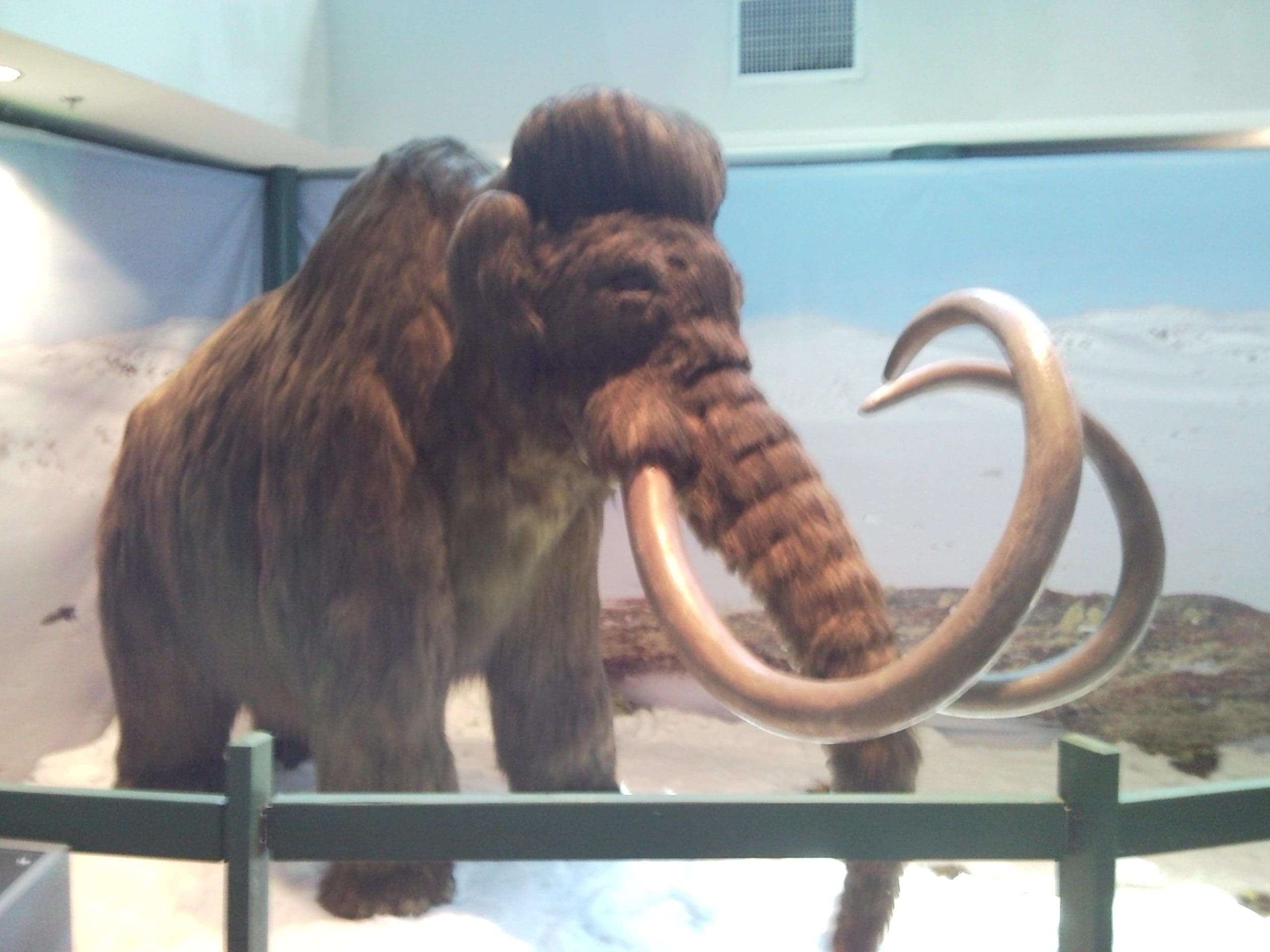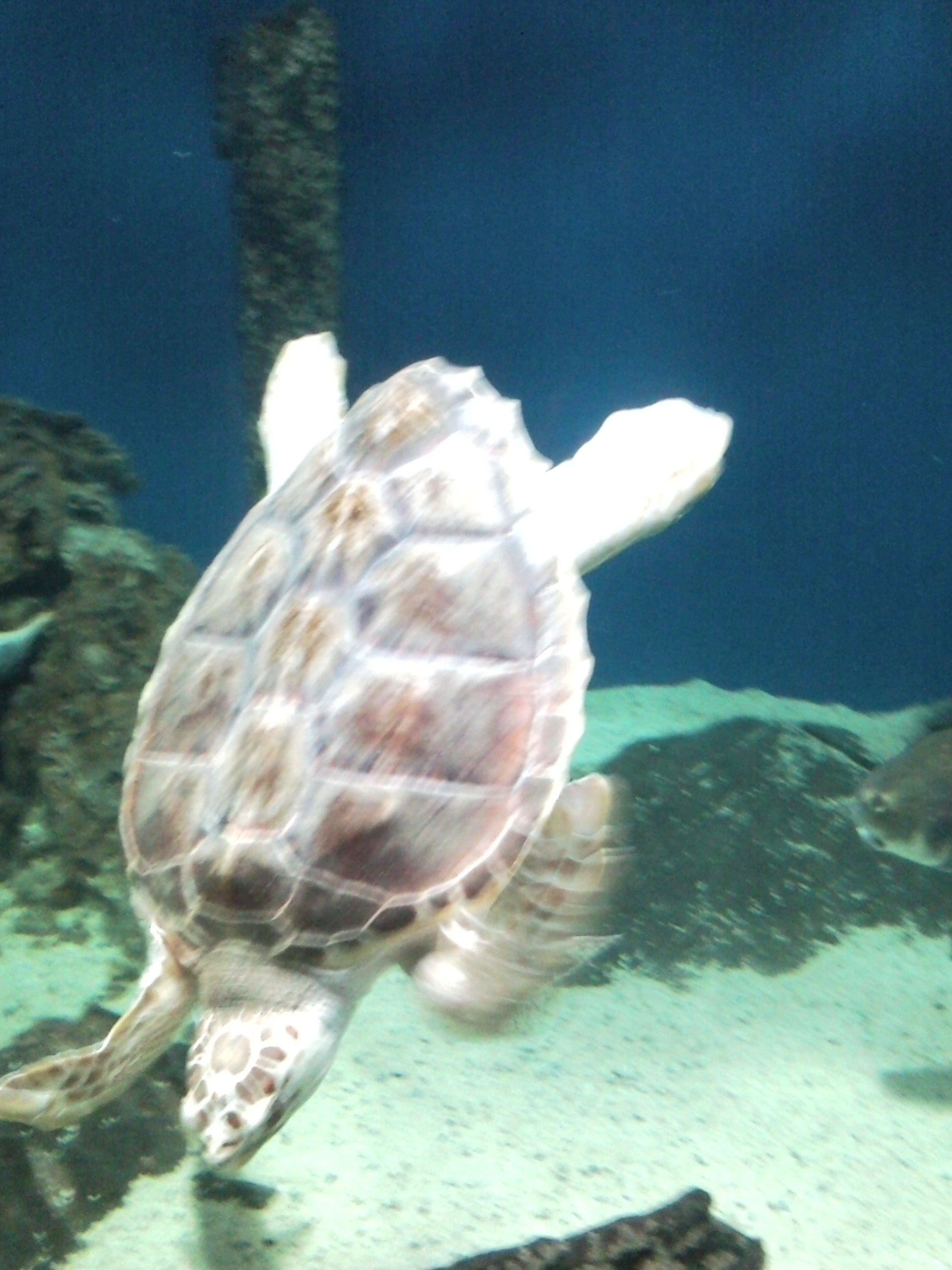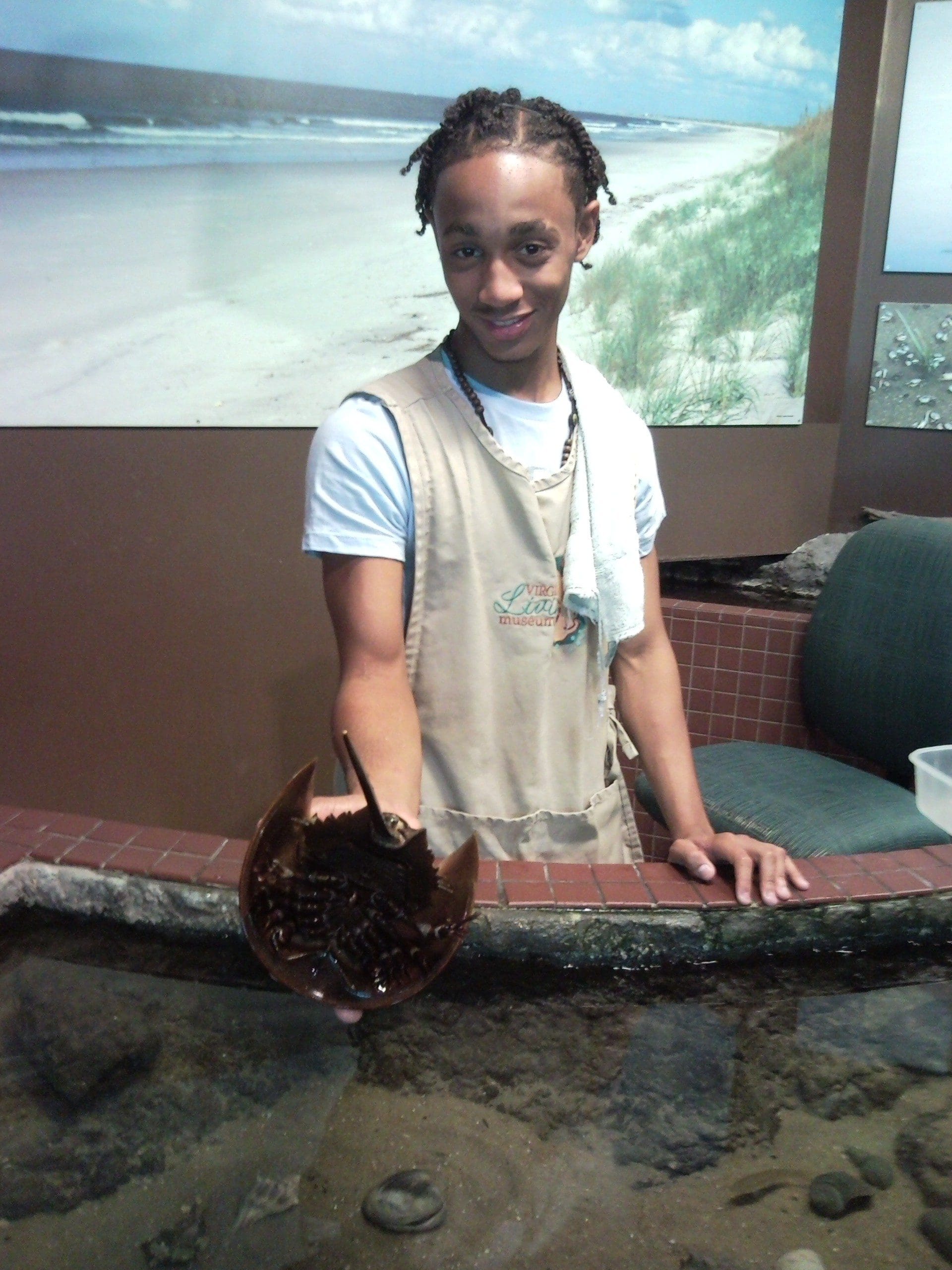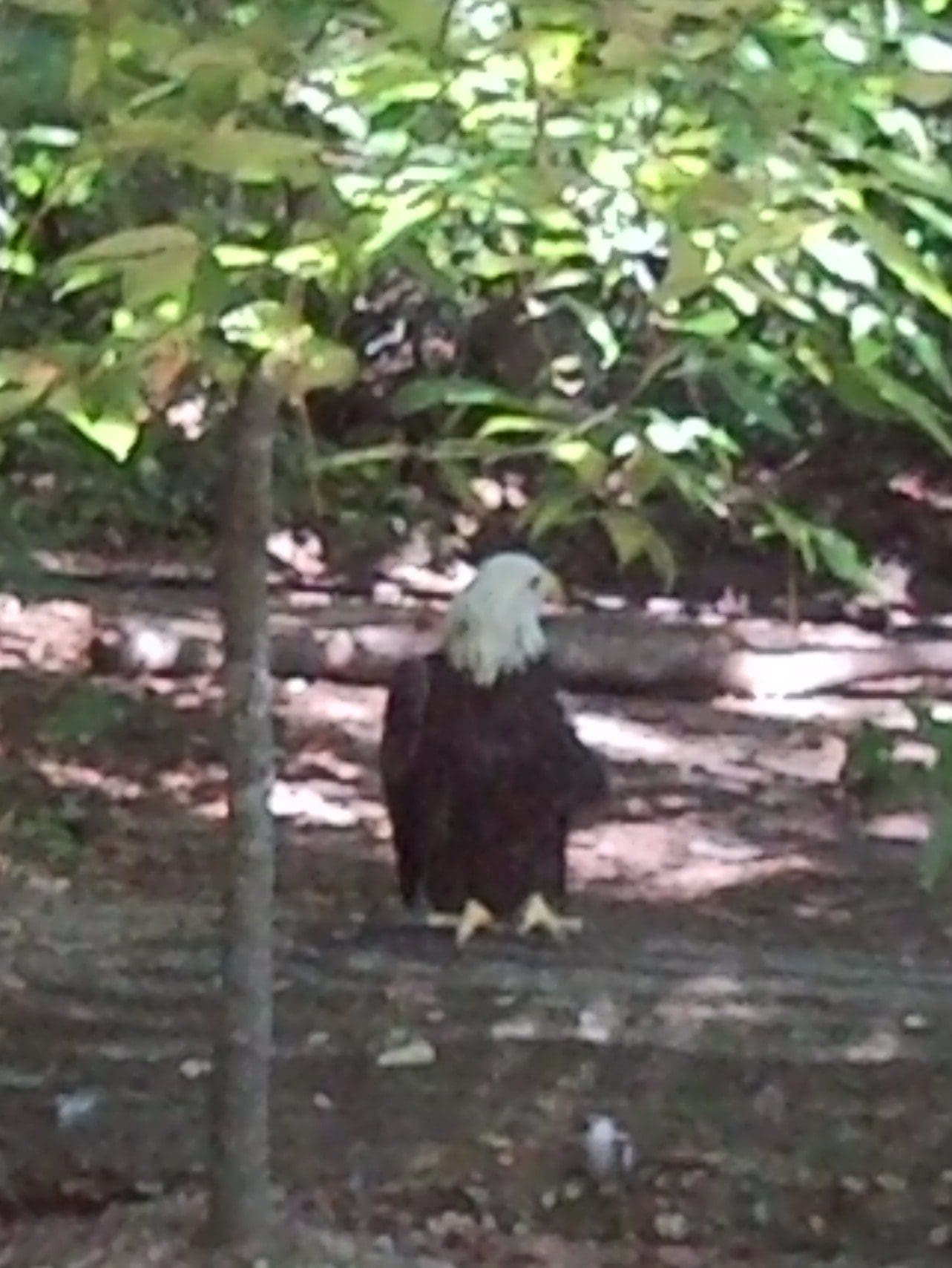The Virginia Living Museum is aptly named because it is a top-notch museum that brings to life the native plants and animals of Virginia’s present and past. It combines the elements of a native wildlife park, science museum, aquarium, botanical preserve and planetarium. Throughout the many exhibits, Virginia’s heritage of native wonders comes alive. Over 245 different animal species are exhibited in natural settings, both indoors and out.
 The Virginia Living Museum is a treasure trove of educational exhibits that is a treat for both kids and adults. Recently I visited specifically to see the changing exhibit – Dinosaurs & More! which is on display until Sept 6, 2010. A fantastic exhibition of animatronics dinosaurs that takes you back to “the land before time.” The Woolley Mammoth and the Saber-toothed tigers looked almost friendly, while the beady eye of the Pterodactyl and the huge teeth of the T-Rex reminded me why I prefer the 21st century!
The Virginia Living Museum is a treasure trove of educational exhibits that is a treat for both kids and adults. Recently I visited specifically to see the changing exhibit – Dinosaurs & More! which is on display until Sept 6, 2010. A fantastic exhibition of animatronics dinosaurs that takes you back to “the land before time.” The Woolley Mammoth and the Saber-toothed tigers looked almost friendly, while the beady eye of the Pterodactyl and the huge teeth of the T-Rex reminded me why I prefer the 21st century!
 In addition, inside the museum, all the state’s regions are represented. In the Coastal Plains gallery, you can get an up close and personal view of large sea turtles and sharks through the glass of a 30,000 gallon aquarium, as if you were swimming with them! The Chesapeake Bay is known as the world’s richest nursery and at the Touch Tank, you can learn about and actually hold sea stars, spider crabs, horseshoe crabs, and clams.
In addition, inside the museum, all the state’s regions are represented. In the Coastal Plains gallery, you can get an up close and personal view of large sea turtles and sharks through the glass of a 30,000 gallon aquarium, as if you were swimming with them! The Chesapeake Bay is known as the world’s richest nursery and at the Touch Tank, you can learn about and actually hold sea stars, spider crabs, horseshoe crabs, and clams.
In the recreation of a real Cypress swamp, a walk-through, two-story glassed-in gallery transports you to a natural environment that highlights the importance of the endangered wetlands habitat. Here you see indigenous alligators, a huge snapping turtle, catfish and ducks.
The Appalachian Mountain Cove is also a two-story walk-through gallery of cool mountain streams, free-flying song birds, and a lake filled with pre-historic looking paddlefish. Nearby, the Piedmont and Mountains Gallery has another large aquarium exhibiting the fall line of the James River near Richmond, filled with small-mouthed bass and catfish. Smaller exhibits of wood turtles, red squirrels and pond fish complete the area’s wildlife.
The Underground Gallery shows Virginia’s fossil banks created when the oceans covered much of the state. Virginia is also home to many limestone caves. The animals who live in them, like frogs, rats, and blind fish are exhibited in a rock corridor recreation of a cave. The World of Darkness Gallery shows species that live in the dark, both on land and under water. From the nocturnal owl exhibit to the ghostly jellyfish tank, this gallery is can be a little creepy!
 Adjacent to each gallery is an interactive Discovery area for kids and adults to touch fossils, hear the buzz of a visible bee hive, or learn about science from a hands-on perspective. More than two million students have visited the Museum on school field trips and personal visits. All of the Museum’s classes are correlated to Virginia’s Standards of Learning and targeted to specific grade levels. If you live in Virginia, chances are your child has been here. If you are just visiting, be sure not to miss this opportunity for your children’s enrichment.
Adjacent to each gallery is an interactive Discovery area for kids and adults to touch fossils, hear the buzz of a visible bee hive, or learn about science from a hands-on perspective. More than two million students have visited the Museum on school field trips and personal visits. All of the Museum’s classes are correlated to Virginia’s Standards of Learning and targeted to specific grade levels. If you live in Virginia, chances are your child has been here. If you are just visiting, be sure not to miss this opportunity for your children’s enrichment.
But that isn’t all the Virginia Living Museum offers! Outside is a ¾ mile boardwalk beside and crossing a lake. All along are naturalized habitats of Virginia animals including otter, beaver, Bald Eagle, bobcat, skunk, fox, an aviary, and many more. All of the animals on exhibit could not survive in the wild because of injury or they were born in captivity. There is also a Virginia Garden, highlighting 400 years of botanical history, a butterfly garden, and a unique “Living Green House” environmental education center that is one of the first of its kind in the US.
 The space above Virginia is also on display with the Abbitt Planetarium’s full screen projection system where planets, black holes, and the solar system can be studied. Additionally, the Abbitt Observatory has a 16-inch university grade Meade telescope that sits in a 360 degree rotating dome where you can see sunspots and solar flares.
The space above Virginia is also on display with the Abbitt Planetarium’s full screen projection system where planets, black holes, and the solar system can be studied. Additionally, the Abbitt Observatory has a 16-inch university grade Meade telescope that sits in a 360 degree rotating dome where you can see sunspots and solar flares.
While there is a paid staff of employees, the museum could not be what it is without its volunteers. They spent many thousands of hours caring for the animals and sharing their expertise with visitors. On my recent visit, one of the volunteers, a very knowledgeable gentleman named Art, ambled up and engaged me in conversation about the exhibit. I learned things that I never would have thought to ask. I glanced at his name tag and saw that he has 4500 hours of volunteer service at the museum. WOW, any way you do the math, that’s dedication! My hat is off to Art and the hundreds of others like him who make the Virginia Living Museum a true gem among Virginia’s many resources. Do yourself and your family a favor and visit soon!
The Virginia Living Museum is located at 524 J. Clyde Morris Blvd., Newport News, VA 23606. 757-595-1900. www.thevlm.org.






Leave a Reply